2020 was a weird year. Many will remember it as strenuous or dreadful. Due to the COVID-19 pandemic, travel restrictions and contact reductions were put in place all over the world. Vacation plans had to be changed or abandoned, everyday activities like going outside or visiting family often became afflicted with great uncertainty or even became illegal. Among all this, Germans luckily got away pretty lightly, compred to many other parts of the world.
Looking at 2020 from a birding perspective, however, it was a good, possibly even a great year! an aspiring young(ish) birder managed to pass the old German Big Year record from 2018 (352 species) with an awesome 357 species and rare birds were found all over the country, including many incredible stories that shall be told in the following blog post.
Following, I will try to give an overview about the most astonishing
bird finds of 2020 in Germany. Many more stories could be told, but for this blog post and poll I have decided to leave out rarities that have become (near-)annual such as American Wigeon, Pygmy Cormorant or Pallas's Leaf Warbler. I also won't include long-stayers from the previous year (e.g. Yellow-billed Loon, King Eider) nor most species where there is great doubt about their wild provenience (e.g. Marbled Teal) or that were proven as escapes (e.g. Grey-headed Swamphen). In a few instances (Eastern Olivaceous Warbler, Brown Booby and Red-billed Tropicbird) I simply don't have enough insight to adequately comment on credibility of the observation and/or identification and thus can't make a robust assessment of the circumstances, which I deem crucial for this poll. I have therefore decided to leave them out of this poll, even though especially the Red-billed Tropicbird could have been a very strong contender for the title. I have however included a few birds that wouldn't normally have made the grade for such a poll, but where circumstances were so extraordinary that I felt they had to be taken into account here.
It's now your turn to decide, which bird YOU think deserves to be awarded first place as "Best rarity in Germany 2020".
If the above poll doesn't work check out this link.
Please inform me, if you feel like I forgot a bird that needs mentioning or if I have made mistakes in the species accounts.
Cackling Goose (Branta hutchinsii)
Cackling Geese in central Europe are a very controversial matter. It seems fairly indisputable that birds of the subspecies hutchinsii reach Northern Europe (Iceland, Ireland, Britain, etc.) on an (almost?) yearly basis. Due to this pattern, nine individuals have also been accepted as genuine vagrants in the Netherlands. Given the great numbers of wintering geese in Germany, it seems quite possible that occasionally some Cackling Geese may end up it Germany, too. So far the German rarities committee (DAK) has recommended twice to accept birds as possibly wild (Category D), but the Committee in charge of the official German list (Kommission "Artenliste der Vögel Deutschlands") has made the dubious decision not to follow the well-founded rationale of the DAK (once again). In December 2019 and February 2020 another Cackling Goose of the migratory subspecies hutchinsii was found in central Germany (Saxony-Anhalt and Thuringia, very likely the same bird in both cases) among Tundra Bean Geese. The credentials of this bird seem to be almost as good it gets. Could this be the bird that finally convinces the relevant authority that Cackling Goose needs to be on the official German list?
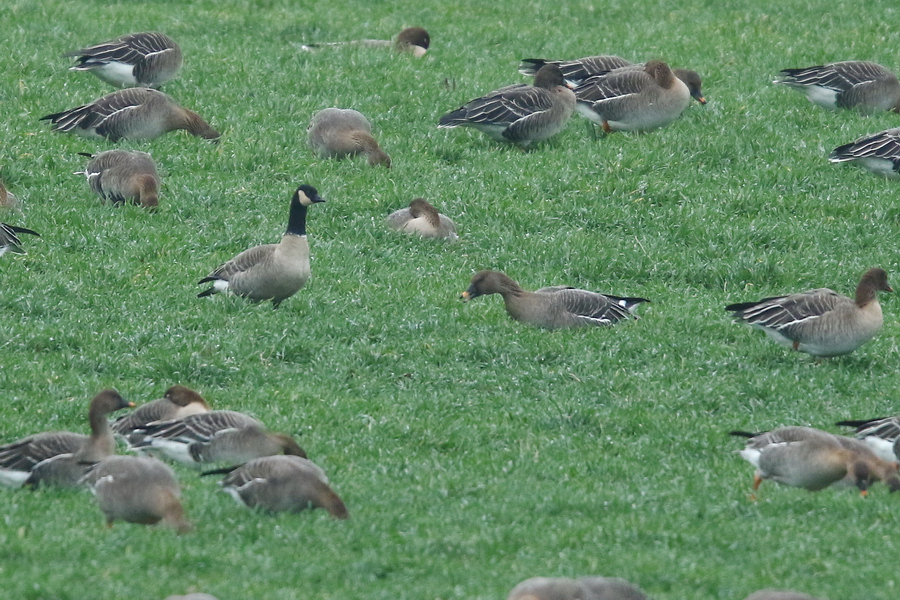 |
| © Jens Voß |
Baikal Teal (Sibirionetta formosa)
Baikal Teal is also one of those very controversial species that is not on the official German list (yet), as frequent escapees obscure the understanding we have of its vagrancy potential. After much debate, the species has recently been accepted onto the national lists of several nearby countries such as the Netherlands, Denmark and the UK, but no Baikal Teal in Germany has, so far, passed the vigorous tests to determine its wild provenience. A well-twitched, handsome drake that spent more than a month in early 2020 (February 9th to March 11th) on the Steinhuder Meer in Lower-Saxony may very well be the first one to pass these tests and allow the species to finally be added to the German list.
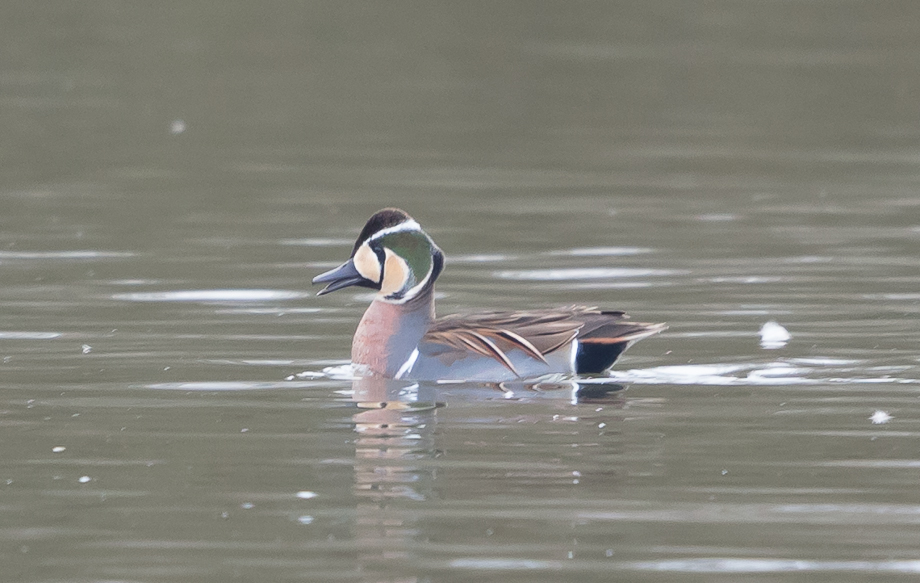 |
| © Oliver Käseberg |
White-headed Duck (Oxyura leucocephala)
White-headed Duck is a species that historically definitely used to reach Germany as a vagrant in the 19th century and the mid-20th century. There were at least eleven records of 13 birds in Germany (1x before 1854, 7x 1954-1957, 3x 1962-1964) prior to the formation of a rarities committee in Germany. From 1989 onwards there have now been 25 reports, including at least 22 different birds, yet only five of these reports have been accepted as genuinely wild birds, though once again the reasoning behind the rejection of most records seems dubious. Luckily, the current rarities committee has ameliorated from predecessing committees, so that the observation of an immature (initially misidentified as a Ruddy Duck!) on a water reservoir near Landshut in Bavaria from December 16th onwards stands very good chances of getting accepted as Germany's sixth modern-times record of this fascinating duck species. (Interestingly, there is also a report of two males in Bavaria (near Adelsdorf) frm April 9th, but unfortunately these disappered before the following day, so that there are no pictures.)
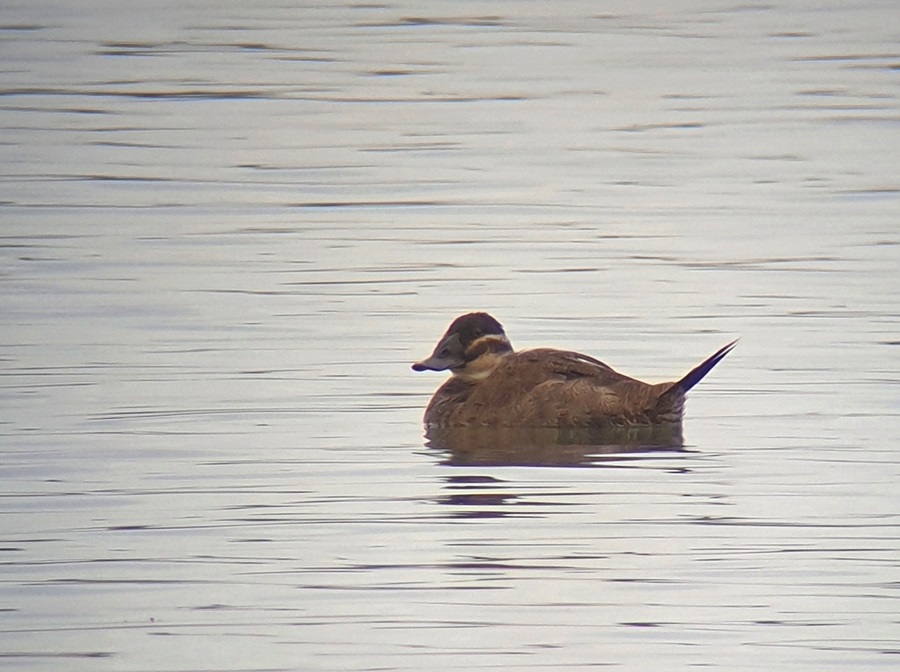 |
| © Bastian Meise |
Greater Spotted Eagle (Clanga clanga)
There are at least 40 modern-time records of Greater Spotted Eagles in Germany, several of them involving returning individuals, such as the famous transmitter-carrying eagle Tõnn from Estonia. Given the near-annual occurrence in Germany (the species has even bred together with a Lesser Spotted Eagle from 2003 to 2006) I would normally not include this species here. The difference between 2020 and previous years is however, that for the first time in 13 years and over twenty trans-German crossings the beloved Tõnn allowed for birders to twitch him, as he slowly moved through Saxony and Bavaria during his autumn migration towards Iberia. Sadly it may have been his last passage, as he disappeared soon after reachin his wintering grounds near Alicante. One has to wonder just how many large raptors pass through Germany each year without being detected!
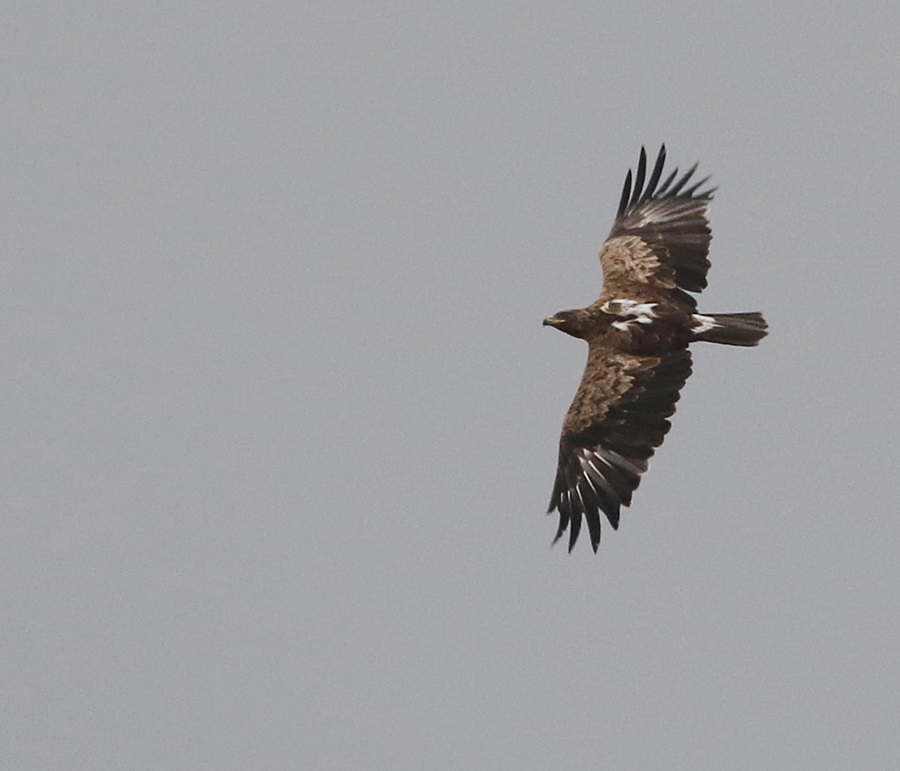 |
| © Bastian Meise |
Eastern Imperial Eagle (Aquila heliaca)
Eastern Imperial Eagles are much rarer than Greater Spotted Eagles (GSE) in Germany with only 13 accepted modern-times records and three historical records. Interestingly, just as with GSE four of these records only exist because of radio transmitters as the Hungarian and Austrian Eagles "Csörgey", "Esperanza", "Telek" and "Karls" flew over southeastern Germany in 2015 and 2016 without a single birder seeing them. The exact opposite is of this is an Eastern Imperial Eagle at Randowbruch, which must have been seen by hundreds of birders by now, as he has been holding a territory since 2019. Watching it fight with the local pair of White-tailed Eagles and enjoying the Lesser Spotted Eagles in the same airspace must fill every birders heart with delight. Could it happen that this mighty species breeds in Germany one day?!
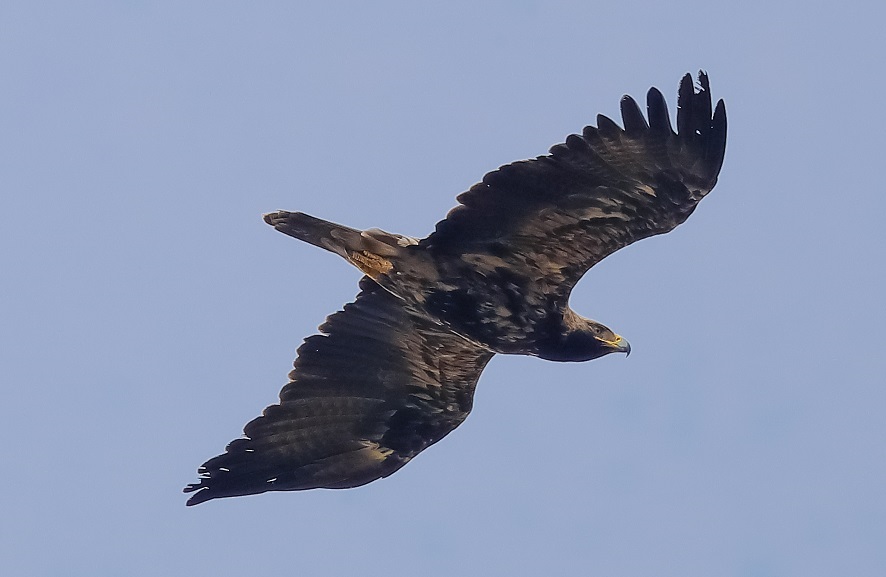 |
| © Thomas Hanel |
Bonelli's Eagle (Aquila fasciata)
With only two previous accepted records of Bonelli's Eagle in Germany, this was definitely the rarest of the three Eagle species in Germany mentioned in this blog post. And just as with the previous two species, radio transmitters played an essential role for the observations in 2020. Unbelievably, this year saw two different individuals reaching Germany from southwesternmost France, whose movements could be followed through much of Northwestern Germany. Lots of German twitchers were so thankful to the french project managers, who kept them informed about the whereabouts of the Eagles (even though they were very busy themselves) that a very considerable donation could be transferred to them and their research. Hopefully, this awesome international cooperation will continue in following years.
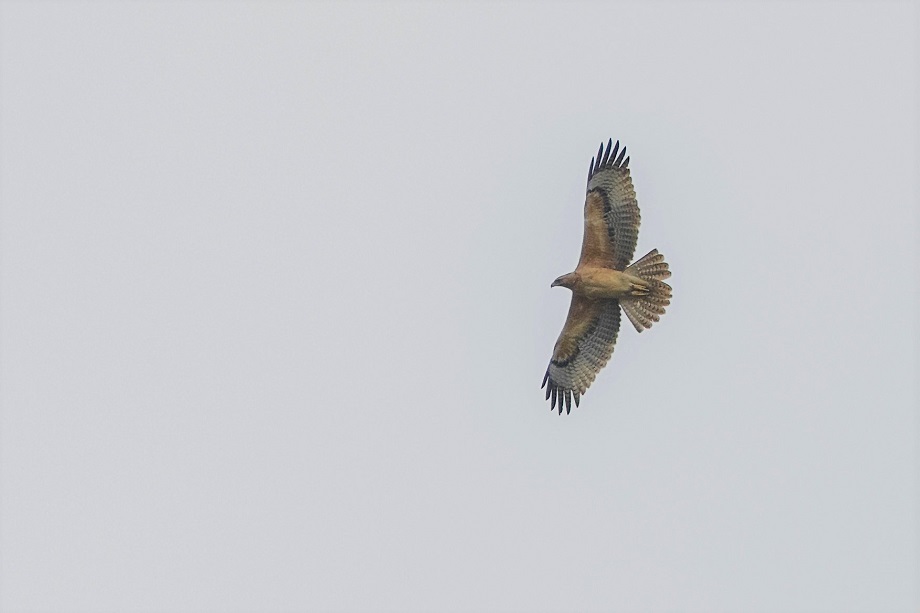 |
| © Marius Holtkamp |
Greater Sand Plover (Charadrius leschenaultii)
With only nine previous records, the species has still to be considered a major rarity in Germany. However, observation are apparently be becoming more common. After a total of five birds in the last decade, 2020 was a year that saw two different individuals of this charismatic species, one near Arneburg in Saxony-Anhalt (13.06.) and another one at Beltringharder Koog, Schleswig-Holstein (25.-26.07). Given that the first one disappeared after a couple of hours and the second one stayed in a protected area that could only be viewed from great distance, not many observers had the luck to observe the charismatic species in 2020, but those who did can only be envied.
 |
| © Dominic Cimiotti |
Lesser Sand Plover (Charadrius mongolus)
At first glance the observers in Reesholm in northern Schleswig-Holstein thought they had found a Greater Sand Plover on May 9th, but careful examination of the pictures obained, functioning information chains and subsequent observations by dozens of lucky twitchers the next day revealed the photogenic bird to be Germany's long-awaited first Lesser Sand Plover. I think the below picture speaks for itself. Need I say more?
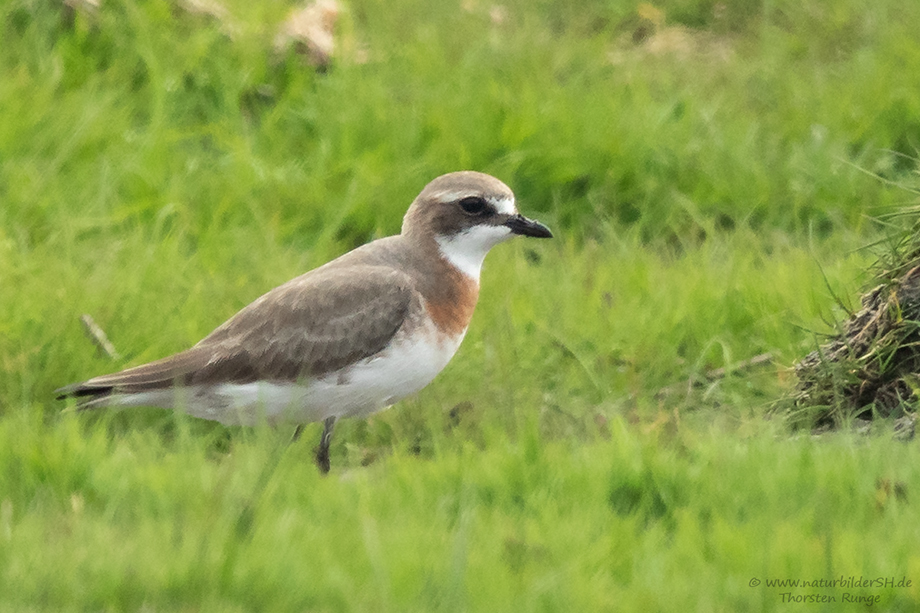 |
| © Thorsten Runge |
Spotted Sandpiper (Actitis macularius)
With only eleven modern-day records (and ca. five historical records), this species is still a very rare vagrant in Germany. This year's individual was found under curious circumstances, when it appeared right in front of a photographer's hide, who was trying to photograph Little Ringed Plovers (with a permit!) at Reeser Meer in Northrine-Westfalia on July 25th. Unfortunately, I couldn't get permission to use the frame filling pictures of this bird in breeding plumage, but to some extent the lack of a good picture here reflects the real-life situation as the bird proved almost impossible to twitch (a picture can be found here, you'll have to scroll to page 35). Only very few birders managed very distant views on the evening the news spread, as the area was mostly out of bounds without a permit. The bird probably lingered around until at least the next day, but pretty much no one felt confident to safely call the bird from the distance.
Lesser Yellowlegs (Tringa flavipes)
So far, there have been 15 records of Lesser Yellowlegs in Germany, but only two records stem from the last ten years. Thus, a bird in the sewage farm near Münster seen from May 11th to May 13th proved extremely popular with twitchers from near and far. Surprisingly, soon after another bird turned up in the Hauke-Haien-Koog between July 6th to July 10th (retroactively also found on pictures from July 3rd). Thus, for the first time since 2007 one had the theoretical chance of seeing two Lesser Yellowlegs in Germany, though I don't believe anyone took it!
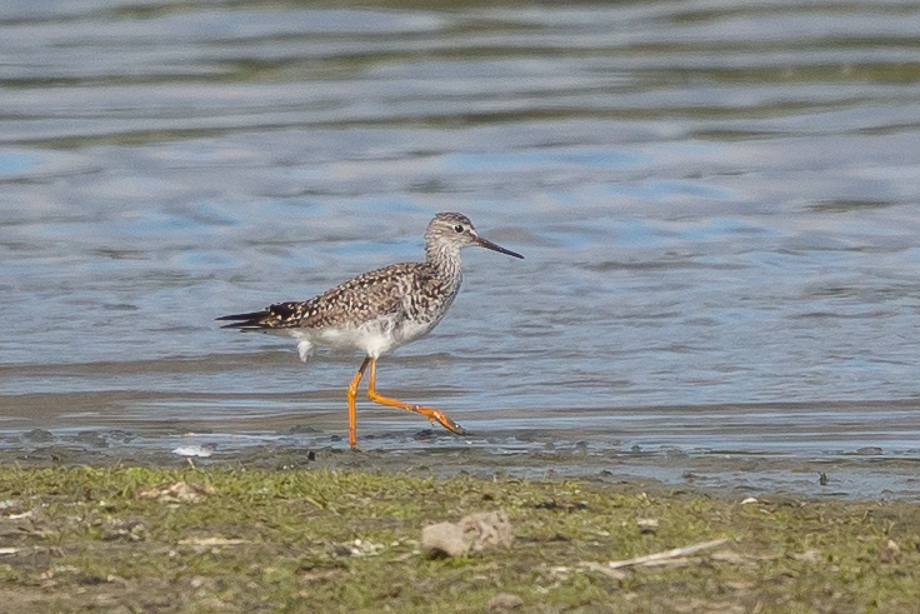 |
| © Oliver Käseberg |
Great Snipe (Gallinago media)
Great Snipes are annual visitors in Germany, they even used to breed here, though that is long ago. Normally, I wouldn't include this species in this blog post, especially considering how most individuals are only seen briefly and badly after accidentally being flushed. This year however, saw at least four displaying males, some of which allowed for great twitches. Especially, many dozens of happy birders enjoyed close-range views in Rehburg-Loccum (Lower-Saxony) in mid-May. The stunning picture below (probably one of the best ever taken in Germany) was taken at the same time of year (May 17th) in Saxony, but this wasn't one of the displaying birds.
 |
| © Tobias Zimmermann |
Bonaparte's Gull (Chroicocephalus philadelphia)
Bonaparte's Gull has only ever been recorded in Germany on four occasions. The last accepted observation is from 2010, thus many people would have been eager to twitch the bird that was found in Cuxhaven on November 15th. Unfortunately, the bird disappeared and couldn't be refound, so anyone who only recently started twitching will have to wait for anoher one, that stays a little longer. Let's hope this won't take another ten years!
 |
| © Joerg Bendrien |
Roseate Tern (Sterna dougallii)
The graceful Roseate Tern is a species that used to breed in the Sylt area, but this was almost 150 years ago. In more recent times an individual paired up with a Common Tern and bred on the rather inaccessible island of Minsener Oog in 2000. Apart from that, modern-day records have become extremely rare, with only five more observations in Germany since 1977 and the last one having occured in 2001 on Hallig Hooge. With fairly recent observations in Switzerland and Poland and near-annual occurrences in the Netherlands hopes were high that one of these stunners might finally visit Germany again, but no one imagined that this would be how it would happen: A Tern was uploaded to the portal ornitho.de as "Common or Arctic Tern" on July 22nd, ten days after the actual observation of the bird. It was noted that the bird was ringed and that it seemed to fit neither species perfectly. Soon after, some local birders picked up the picture and after some discussion through WhatsApp it became apparent, that finally, after almost twenty years a Roseate Tern had made it to Germany again, only to silently disappear again before anyone got to admire its beauty.
 |
| © Maria und Hans Hoffmann |
Pied Crow (Corvus albus)
In 2019 a Pied Crow made its way along the British and Dutch coast and was (apparently) briefly seen in northwesternmost Germany, which brought the species onto the radar of German birders. The origins of that bird were already questionable, but crazier things have happened in the birding world. So, when another (?) Pied Crow appeared in Olbernhau in Saxony in October 2019 quite a few birders went to twitch it. The bird stayed is still around, though repors have thinned out considerably. Personally, I'm still not convinced this bird didn't stem from a private collection, but if it really made its way north all through Tunisia, Linola (Italy) and Austria, as has been suggested by some, this might actually be one of the most incredible records ever in Germany. This is why I have decided to include it in this year's summary.
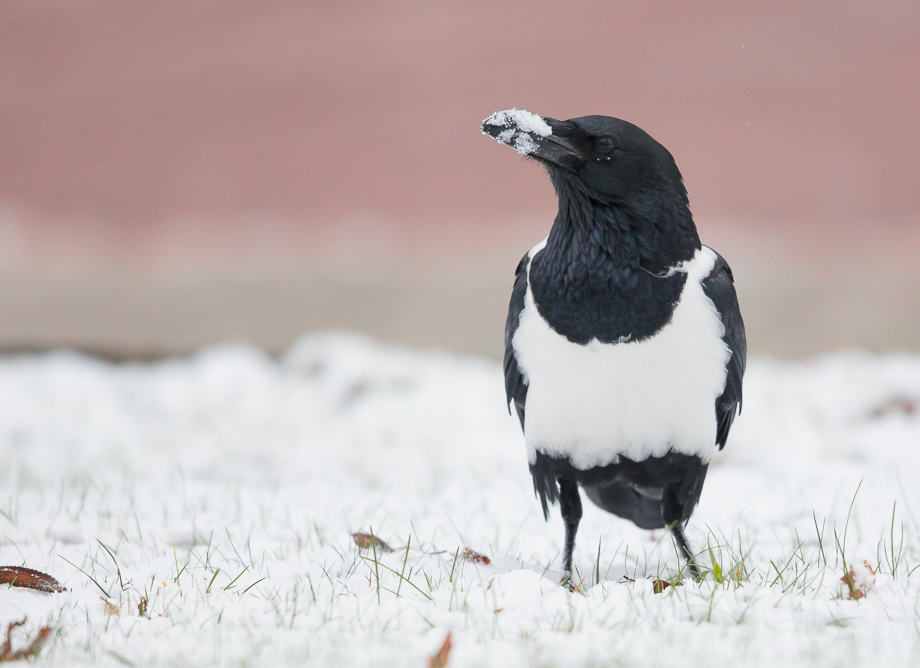 |
| © Oliver Käseberg |
Black Lark (Melanocorypha yeltoniensis)
Black Lark is currently a category B species in Germany, meaning that it's one of only a handful of species that have only been accepted from records prior to 1950. In fact there are three, over a hundred years old, records from Heligoland (1874, 1892, 1909) and a doubtful (?) one from 1962 in Schleswig-Holstein. A bird, found on May 14th near Pilsum in Lower-Saxony would definitely have proven very popular with twitchers from all over Germany, but an unfortunate series of events (species not reportable on ornitho, reviewers not seeing their emails until too late) led to the bird disappearing,, after having been observed by only the finder, who luckily managed to get the below picture, which will hopefully raise the species to category A.
 |
| © Herald Ihnen |
Two-barred Warbler (Phylloscopus plumbeitarsus)
On October 13th, dozens of birders were happily photographing an obliging Pallas's Leaf Warbler in the center of Heligoland, when a picture was shared in the local WhatsApp group of a still unidentified Warbler near the Northeastern beach. Speculations first went in the direction of a Green Warbler (which has only been recorded three times in Germany), so everyone started jogging in that direction. Meanwhile, the bird started moving southwards and climbed the cliff towards the "Oberland". A few seconds later a very skilled birder managed to correctly call out the Warbler as it flew by him and noticed that it was heading in the direction of the ringing station. There, incredibly, the bird was caught just moments later and identified as Germany's second Two-barred Warbler. The bird in the hand was quickly shown to hundreds of happy birders. After its release, only a single person refound it in the south of the island for a few sonds, before it vanished, never to be seen again. Obviously, the bird had a strong urge to get southwards!
 |
| © Jasper Temme |
Paddyfield Warbler (Acrocephalus agricola)
Paddyfield Warblers are surprisingly handsome birds, given their rather unspectacular brown and beige colouration. Yet, finding one in central Europe should always get your heart pumping: There have only been 12 previous records in Germany. In 2020, three different birds (June 8th, September 17-18th, October 11th), some of them showing quite beautifully, are definitely noteworthy enough to mention it here, though realistically speaking it's chances of winning seem fairly low, or are they?
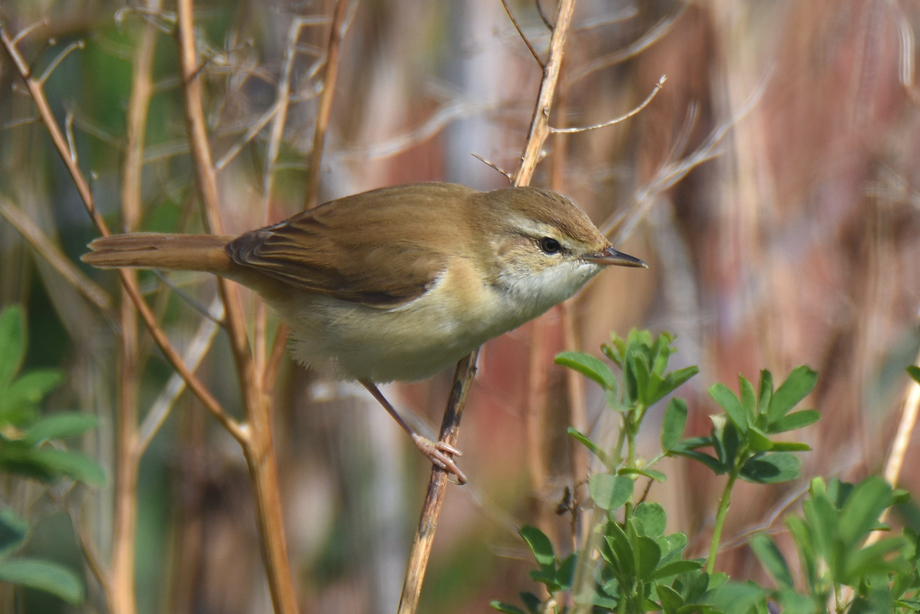 |
| © Lennart Haak |
Lanceolated Warbler (Locustella lanceolata)
The bird in the picture below looks pretty shabby and almost just like any other LBJ (= little brown job), but don't let that fool you about how noteworthy this sighting actually is. Not only have there been only four previous records of this species in Germany, but it was actually the first (kind of) twitchable Lanceolated Warbler here. Only one of the aforementioned four birds survived its stay on Heligoland (1993), whereas the three others died from the collision with the local lighthouse (1909, 1920, 1979). This Lanceolated Warbler would've almost gotten away, as it disappeared into the bushes quickly after having been found just next to a public toilet. Luckily, it returned to the same tiny patch of turf in the evening for the masses to then study its cryptically patterned plumage and its mouse-like behaviour. This would have almost cost it its life, when a cat caught it for a brief second, before upset birders scrambled to its rescue. Let's hope it managed to carry on with its journey without further hassle.
(Interestingly, there was another credible record of Lanceolated Warbler from Germany this year, when an individual was observed near Cuxhaven on September 22nd (remember that there were only four previous records in over a hundred years!). But given the lack of photographic evidence the rarities committee will have to assess, whether it can make the grade as Germany's fifth record.)
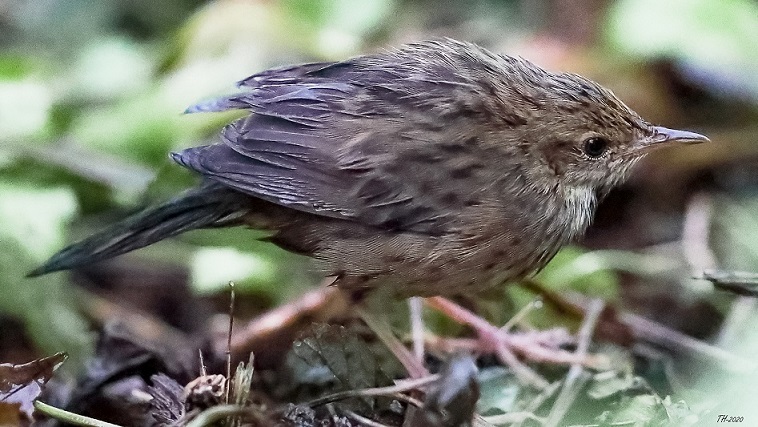 |
| © Thomas Hanel |
Zitting Cisticola (Cisticola juncidis)
The species has become near-annual in recent years, yet its missing on the list of many German birders. Given the proximity of a breeding population in France it was only a matter of time for Zitting Cisticolas to breed in Germany. 2020 was finally that year and not only one but two pars bred in Saarland. Will this interesting species, with its conspicuous flight display and monotonous song now become a regular par of our breeding fauna?
 |
| © Friedhelm Schnurbus |
Siberian Rubythroat (Calliope calliope)
The last and only vagrant Siberian Rubythroat to show up in Germany was observed on Heligoland in November 1995. It's been the dream of most birders to finally the witness a new appearance of this much-beloved stunner in Germany ever since. This year, it finally happened, when a young female finally turned up in the nets of the bird ringers on the remote island Greifswalder Oie. The simultaneous appearance of several other megas on Heligoland and the inaccessibility of its location are probably the reason how little attention this awesome record received. Only a small handful of birders were lucky enough to add it to their Germany list. Seems like it'll stay one hell of a blocker.
 |
| © Steve Klasan |
Pied Wheatear (Oenanthe pleschanka)
Not one, not two, not three, but four different Pied Wheatears turned up in Germany this year, which is very surprising, given that the species has only been recorded 26 times in Germany before. The first Pied Wheatear of 2020 was a beautiful male one-day wonder near Alme in eastern Northrine-Westfalia, but the second one, another male, oversummered and completed its moult over an entire month in Kathewitz/Saxony (July 13th to August 18th), so that hundreds of twitchers got the chance to catch up with this cool southeastern species. Ultimately, two different female-coloured birds showed up on the magical island of Heligoland in October (19th to 21st and 23rd), so that the number of people who added this species to their life list or Germany list must have been at a record high.
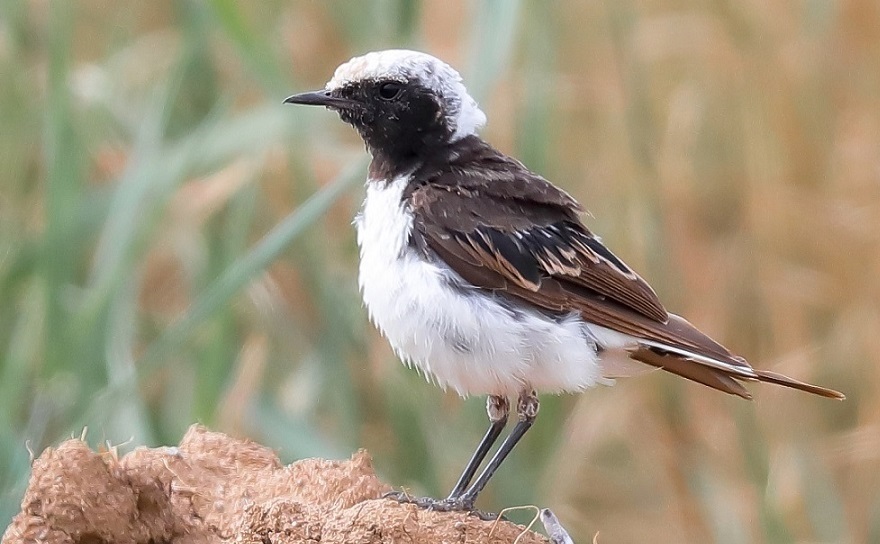 |
| © Thomas Hanel |
White's Thrush (Zoothera aurea)
Of the ca. 35 previous records of this intricately patterned stunner, only nine fall within the last 45 years. Therefore, two birds in one year are remarkable. The last time this happened was in 1995. One bird was caught and ringed on Greifswalder Oie on September 20th and the other on was observed in the field on October 7th on Wangerooge/Lower-Saxony. Yet again, these two islands seem to be trying to compete with the Heligoland for the title of biggest migrant trap in Germany. The Wangerooge bird was a great joint effort: After the bird was very shortly glimpsed from a bike, the finder informed all birders on the island, who then searched for 5,5 hours in horrendous weather and were finally rewarded for their perseverance. As seems to always be the case with this species, both Thrushes could not be twitched.
 |
| © Lasse Heckroth |
Rosy Starling (Pastor roseus)
There have been over 170 previous modern-day records of Rosy Starlings in Germany, it's an annual visitor. So, under normal circumstances this species would've never qualified for this ranking. Only just in 2017, central Europe saw an astonishing influx, with at least 23 records in Germany (the previous influx of a similar size happening in 2002). Astonishingly, these earlier events will totally fade away against the influx that happened in 2020: When the magnitude of that will be assessed in its entirety, well over 50 records should reach the German rarities committee. Can the noteworthiness of this mass movement of these extremely handsome birds perhaps compete with the rarity of its contenders in this poll?
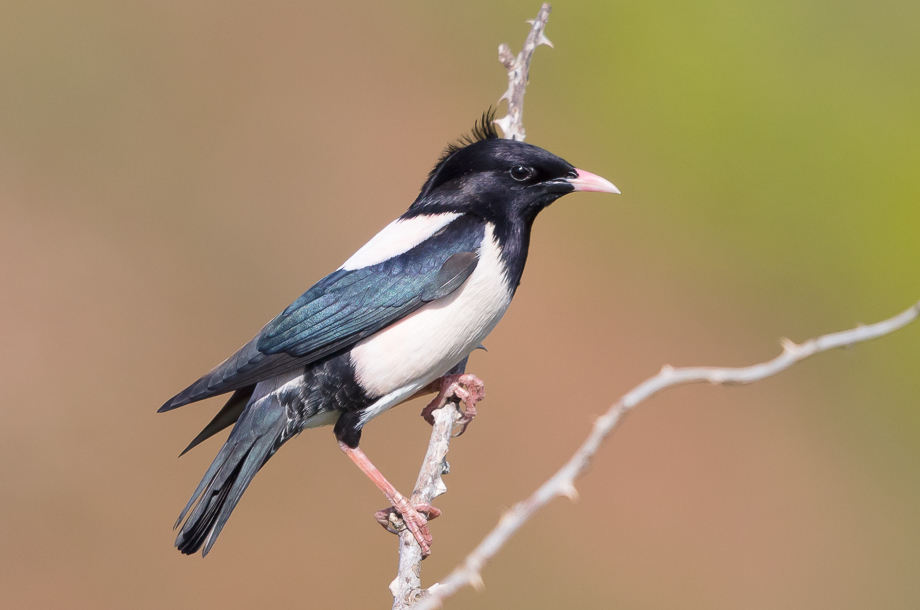 |
| © Oliver Käseberg |
Italian Sparrow (Passer italiae)
Most Sparrows are mostly sedentary birds that don't roam around much, so when an Italian Sparrow was found in Lower-Saxony in 2018 confusion was great. DNA results confirmed its identity (unlike e.g. with some birds in the UK), unfortunately circumstances made it difficult to arrange the observation of this neat bird for the masses. But who'd have thought that already two years later another individual would turn up in Berlin, feeding on kebabs together with what appears to be a hybrid (its offspring?). This time the bird was on display for everyone who wanted to see it from July 20th to August 15th. Perhaps this new bird can convince the Committee in charge of the official German list that the species deserves to be at least in category D (instead of category E, where the 2018 bird has (factually falsely) been pigeon-holed).
 |
| © Frank Schubert |
War ein spannender Krimi.
AntwortenLöschen